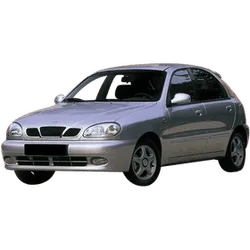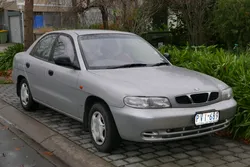

Daewoo Nubira - Generation 1 Overview
Explore the Daewoo Nubira Generation 1, a remarkable car model known for its performance and reliability. Discover features and specifications of this iconic vehicle.
The Daewoo Nubira is a compact car that was produced by the South Korean automotive manufacturer Daewoo Motors from 1997 to 2002. The Generation 1 Nubira marked the company’s entry into the competitive compact car seg...
Technical Specifications
Select Version
Dimensions
Engine
Driving
Others
History and Features
Mycarro AI
Apr 27, 2025
The Daewoo Nubira is a compact car that was produced by the South Korean automotive manufacturer Daewoo Motors from 1997 to 2002. The Generation 1 Nubira marked the company’s entry into the competitive compact car segment and was recognized for its impressive features, affordability, and stylish design. This article explores the design, specifications, performance, and legacy of the first generation of the Daewoo Nubira.
Design and Features
The first-generation Daewoo Nubira was introduced in 1997 as a replacement for the Daewoo Espero. The car showcased a modern design for its era, featuring smooth lines and a sleek silhouette that appealed to a wide range of consumers. The exterior was characterized by a distinct front grille with the Daewoo badge, large headlights, and bold fender flares. The hatchback and sedan versions offered versatility for families and individual consumers alike.
Inside, the Nubira came equipped with a comfortable and spacious cabin. The interior materials were considered well put together for its price point, combining both functionality and style. Standard features included air conditioning, power windows, central locking, and an audio system, depending on the trim level. Daewoo aimed to provide a balance of comfort and utility, making the Nubira a desirable option in the compact segment.
Powertrain Options
Generation 1 of the Nubira offered a variety of powertrain options to cater to different market demands. It was offered with a range of 1.6-liter and 2.0-liter inline-four engines, delivering adequate power for urban driving and highway cruising. The 1.6-liter engine produced around 103 horsepower, while the more robust 2.0-liter variant provided a bit more power and torque, making it suitable for those craving better performance.
Transmission choices included a five-speed manual and a four-speed automatic. The car's handling was characterized as predictable and composed, which provided drivers with a sense of stability during everyday driving. Although the performance was not class-leading, it met the expectations of consumers looking for an economical and practical vehicle.
Safety and Reliability
As safety began to become a top priority for automotive manufacturers, the Generation 1 Nubira incorporated various safety features for its time. Standard safety offerings included dual airbags, anti-lock brakes (in some trims), and crumple zones designed to absorb the energy from impacts. While the vehicle received mixed safety ratings in crash tests, it offered a sense of security for buyers who may have been looking for a budget-friendly vehicle.
In terms of reliability, the Nubira generally received favorable reviews from owners. Many reported fewer issues compared to competitors in the same segment at the time, making it an attractive option for those prioritizing dependable transportation. However, some parts availability issues arose in certain markets following the company’s decline, which slightly dampened its long-term appeal.
Market Reception and Legacy
Upon its release, the Daewoo Nubira was relatively well-received, particularly in markets such as Europe, Australia, and parts of Asia. Its competitive pricing and feature-set garnered a solid customer base interested in affordable compact cars. Daewoo's marketing efforts and innovative incentives to drive sales also contributed to its initial success.
However, as the automotive market evolved and the company faced financial struggles in the early 2000s, the Nubira's prominence waned. By the time the model was phased out in 2002, Daewoo itself experienced significant challenges, leading to the eventual purchase of its assets by General Motors.
Conclusion
The Generation 1 Daewoo Nubira played a crucial role in the brand’s identity during the late 1990s and early 2000s. Combining style, comfort, and affordability, it appealed to a broad audience of compact car buyers. Despite the brand's eventual decline, the Nubira remains a noteworthy model in the history of South Korean automobiles, reflecting the ambitions of Daewoo Motors to carve a niche in the global automotive industry. As time moves on, this model serves as a reminder of the innovation and progress made in the automotive sector during that era.
